"People might come for the nostalgia, but they stay for the fun and accessibility". Dan Farrimond on the enduring allure of teletext art
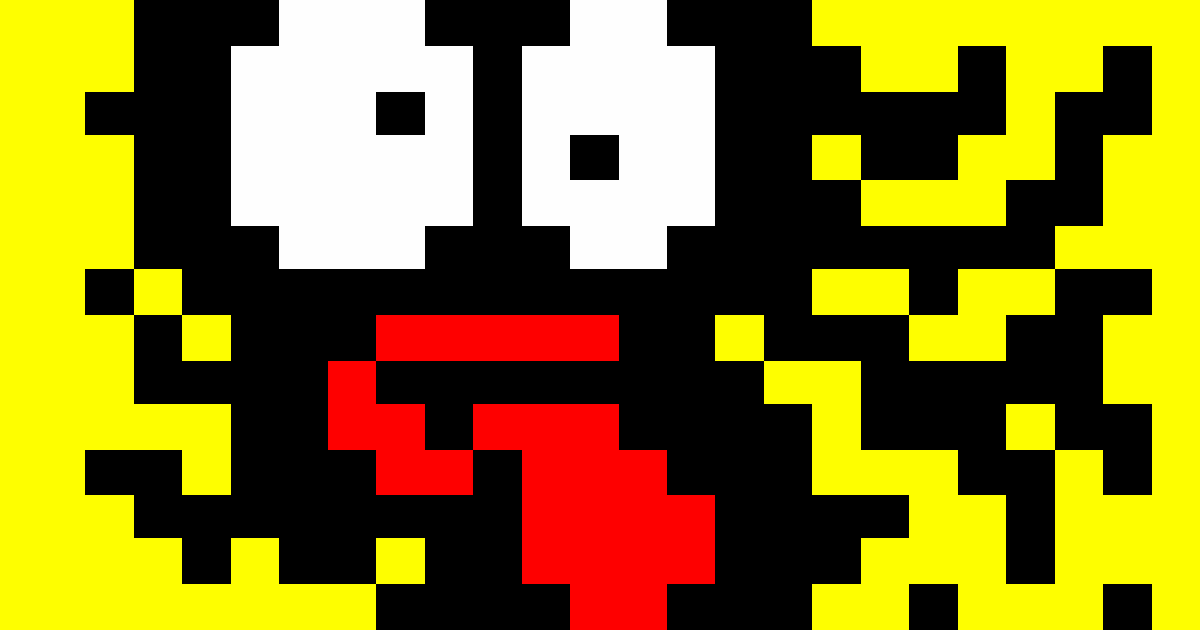
Teletext art is seeing something of a resurgence at the moment, despite many broadcasters having stopped their teletext services. The BBC's Ceefax ceased way back in October 2012, and RTÉ's Aertel has become the latest service to go in October 2023. But the genre of teletext art remains very much alive. It offers surprisingly versatility despite its limitations and it's relatively easy to get started since it doesn't require any particularly advanced digital arts software.
One of the dedicated creatives continuing to breath new life into the genre is the multimedia artist Dan Farrimond, also known as Illarterate. With that retro McDonald's ad triggering a renewed interest in the medium, I caught up with him to learn why he thinks teletext is one of the purest forms of digital art, and why it's not just about nostalgia.
What attracted you to teletext art?
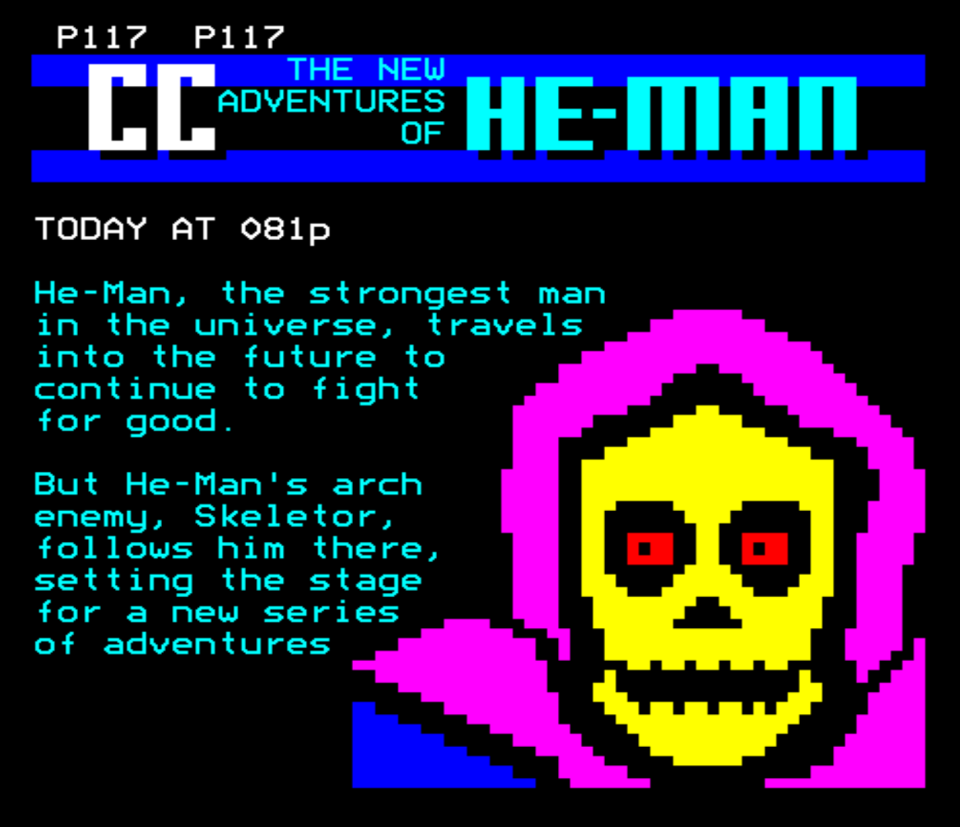
I think I’m more likely to form a deep connection with things if I discover them for myself, and that’s what happened with teletext. Because it was hidden away behind a button press, teletext somehow felt like a secret, and I was an explorer digging up lost treasures. I recall the anticipation as I waited for the page to load up - what new artworks would I find beneath the sand today?
When we got cable TV in the early ‘90s, I gained access to a variety of colourful new services depicting my favourite cartoon characters, and as something I could relate to, that artwork really impressed me. I had a fascination for comics like the Beano and Dandy, and teletext’s particular combination of words and basic graphics felt familiar in that regard.
I still think that cable teletext art is some of the best I’ve seen, the way the colours light up a dark living room like a disco. They stand out in a way they never could have on a white background. And from a distance of 4 metres, those graphics don’t seem so blocky, you know?
The image of Skeletor [see above] was actually recovered from one of my own video tapes by Jason Robertson, the Teletext Archaeologist. I thought I knew everything about that mouldy old tape, having watched it hundreds of times since 1993. But nope, all along there was this hidden teletext art that hypnotised me when I first marvelled at it on the Children’s Channel!
2) Many people see teletext art as something retro or nostalgic. Do you see it that way?
When I started making teletext art more than 15 years ago, I was consulting Ceefax on a daily basis. I still viewed it as current technology, and something distinct from any other news medium. I suppose I would have been more nostalgic if teletext had just disappeared from my life, but it’s always just been there, even after the digital switchover in 2012.
I wonder if we will soon be nostalgic about checking text updates on a sports website? Whilst the Internet is now more convenient, teletext was an event akin to watching a televised football match or movie together. Somehow there’s more romanticism to sitting around the living room TV with your family or friends.
So yes, there’s a definite element of nostalgia, but I sense the persistence of teletext art is driven by something more than that. People might come for the nostalgia, but stay for the fun and accessibility of making art… and ‘writing with light’, as it has been termed.
What are the challenges and benefits of the technical limitations?
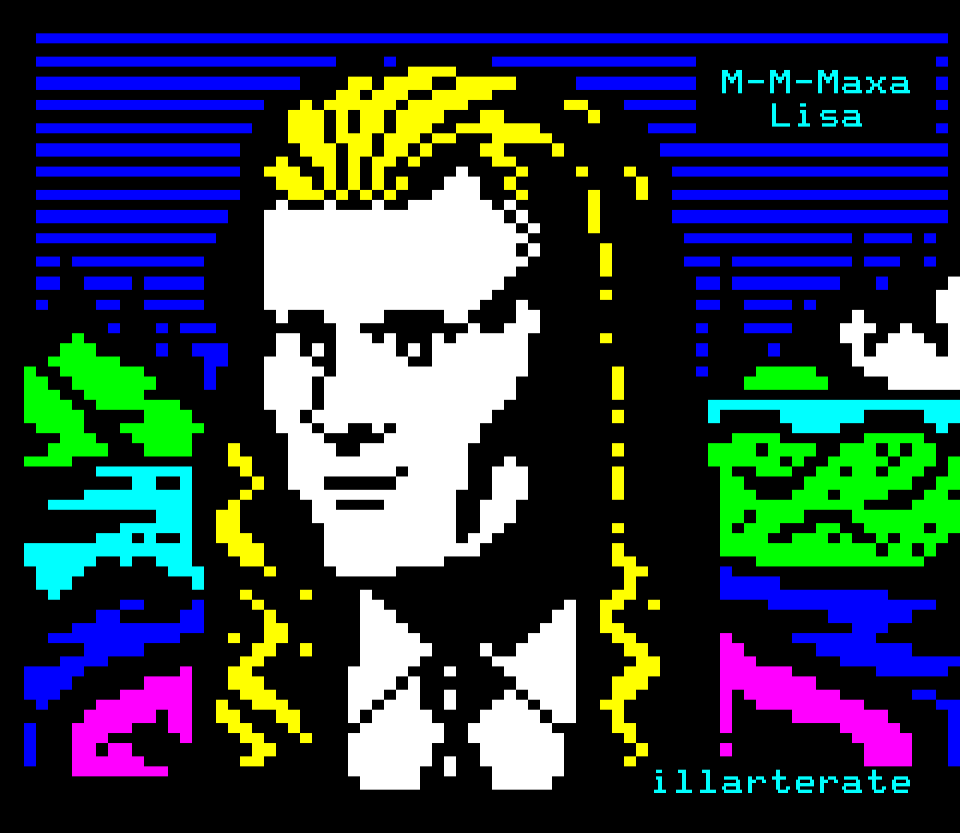
I reckon you’re asking the wrong person because I’ve become accustomed to teletext’s simplicity at this point! One negative is that teletext is so simplified that when you come to experiment with other mediums, you forget there are more than seven colours in the universe. Give me an orange or brown pencil and I’m stumped.
Teletext’s unique restrictions encourage you to streamline your ideas, but you can still incorporate a surprising amount of detail. I’ve seen a variety of artistic styles implemented in teletext art, from Impressionism to clean-cut graphic design, appropriation art and collage. Holger Lippmann won the 2015 Teletext Art Prize with his abstract ‘generative paintings’, and they were stunning, unlike anything I’ve seen in teletext before.
On the surface, teletext’s limitations may seem unforgiving, but I would argue that the opposite is the case. Nobody expects you to paint the Mona Lisa, although lots of people actually have attempted to recreate it in teletext form, including myself (in mashup form). You see other people making teletext art and think, ‘yeah, I could easily do that’. Once you learn the basics, you’ll find yourself making something just as good as the masters.
What are your favourite pieces from the teletext art archive?

It might not be the most expansive, but a memorable piece for me personally was a header graphic on the Mega-Zine letters page. This icon was actually the winning entry of a viewer competition that was ‘teletexted up’ by Steve Horsley.
Confined to a tiny corner, it was open to interpretation exactly who or what this googly-eyed monster could be. However, that was part of the fun: were they breaking out of the television, or did they just have really long frizzy hair?
Before long, contributors had created their own lore surrounding their new mascot, which they lovingly dubbed ‘Davord, Lord of Tharg’. For a small collection of pixels, it didn’t do bad for itself, blowing raspberries at readers for well over a decade.
What's your favourite piece of your own teletext art?
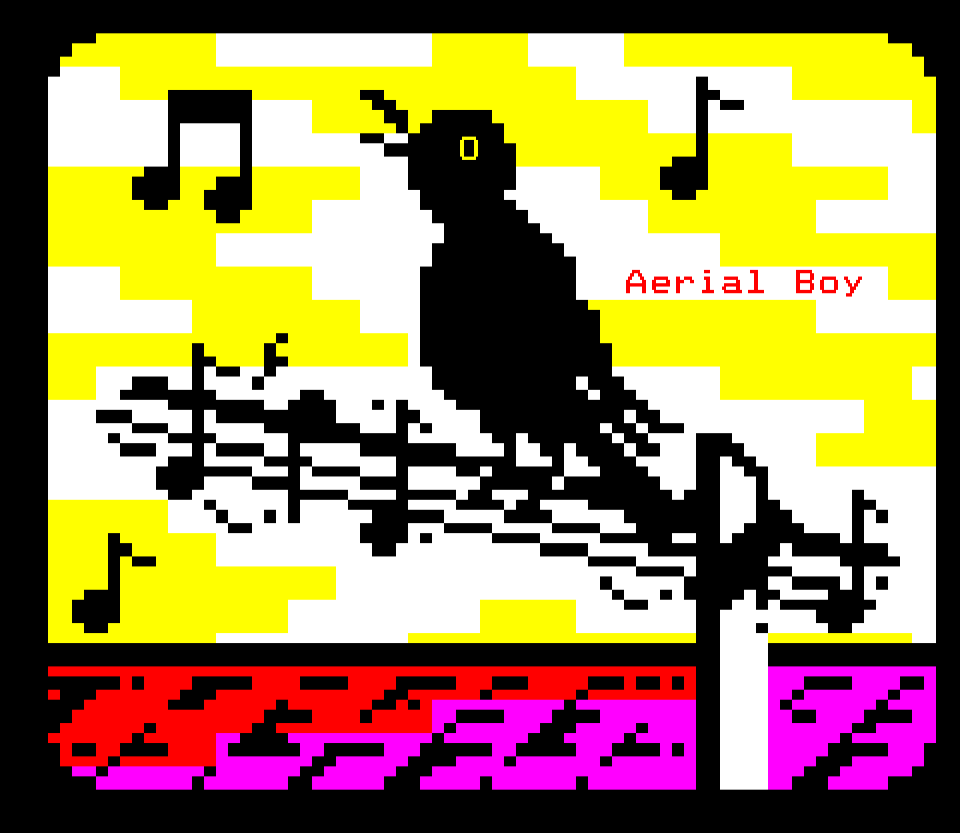
It can be hard to pick a particular piece because my favourites change all the time. However, my favourite from this year is a drawing of ‘Aerial Boy’, a blackbird who would sit on a nearby TV aerial and sing cheerfully each evening.
This artwork is particularly memorable because that little bird was a big part of my bubble for the entirety of this summer. Much of the stuff I have made is a document of my life at that time, something I’d been discussing that day, something I read that made me laugh. Each piece is like a memento, in a way.
Apart from that, I just like the fact that for once, it doesn’t fill the page to bursting and actually looks alright. It’s also a bit of a departure from my usual fallback tropes of parody adverts and wacky cartoons. I love that little Aerial Boy guy!
How do you make your teletext art?
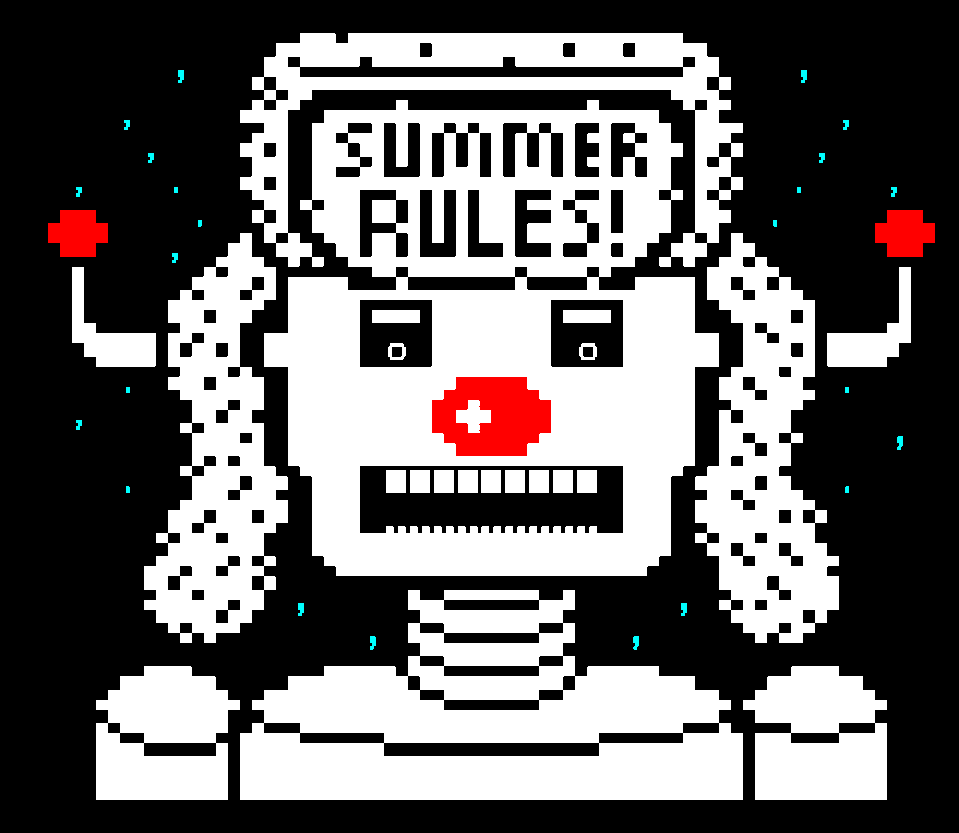
These days I’m most likely to sketch something on my tablet PC and recreate it as best I can in a teletext editor. This may involve scanning (or ‘digitising’) the image into the program, depending on whether I’ve become too attached to the original drawing! There’s a variety of free teletext editing programs, including a couple of browser-based ones. I recommend the ZXNet editor - you can learn the basics in about an hour.
Teletext is broken down into a grid of cells, each of which can contain a text character or six graphic mode pixels, or ‘sixels’ as they’re satisfyingly known. I start by fully blocking out each of these cells in white. Those first marks are rarely the final ones, and I love that freedom to constantly chop and change that comes with any type of digital art.
Next, I’ll add details by chipping away at the blocks to form shapes. I know some teletext artists such as Wim Dewijngaert like to work with circles, but that can often be difficult in a medium consisting entirely of little squares! For my own part, I guess I’m partial to rounded rectangles.
Finally, I’ll add colour and extra touches like bits from teletext’s character set to embellish the artwork. I suppose this is the equivalent of doing guitar tricks - they can be a cheap way of adding flashiness. For example, I used flash for Summerbot’s LED ‘ears’, full stops and apostrophes for snow, and text mode blocks for the top teeth. All of this process could take an hour, or maybe a few hours. Or years, depending on how much I keep coming back to the artwork over time.
You can see more of Farrimond's teletext art on his website. You can learn more about the medium in general, and see more examples of archive teletext art, at teletext.art.co.uk. For more on retro art, see our feature on Bitmap Books.

